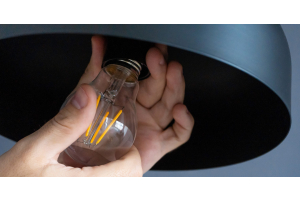LED Driver Basics

LED Driver Basics: Choosing the Right One for You
LED drivers act in a similar fashion to how a traditional electrical ballast works for a fluorescent lamp. LED drivers convert electrical power into the voltage and current needed for the LED system. The power sent to the LED is regulated by the driver, which increases the efficiency and overall lifetime of the LEDs.
The major difference between electrical ballasts and LED drivers is that while fluorescent lamps have a set and unchanging defined electrical load, LEDs can have a variable range of both electrical load as well as circuitry. Due to this difference, LED drivers must be able to safely handle a fluctuating load. A LED driver is designed to provide enough current to keep the LED at a consistent brightness, while also not providing too much current as to damage the LED. Not using a driver for your LED circuit will lead to an unwanted increase in temperature output by the LEDs resulting in premature failures as well as possible fire hazards.
Most brands of LED drivers also come with user-programmable features that are not found on electrical ballasts. Brands which have programmable LED driver options are LSI, Advance, and Universal Lighting. Depending on the brand and driver type, features can include OEM resistors for limiting current output, temperature regulators, connections for cooling devices, auxiliary power supplies, and other programmable features such as dimming.
Which LED driver type that you should use depends on your LED system. There are three distinctions to make when choosing a type of LED driver, the UL Class, Constant Current vs. Constant Voltage, and AC vs. DC. While the various types and applications of LED drivers may seem daunting at first, this article will describe and explain the use of each type of LED driver. Be sure to check out our catalog of LED drivers once you determine the type of driver that best suits your LED lighting needs.
UL Class: Class 2
LED drivers come in two different classes, Class 2, and Class 1 (also known as non-Class 2). Class 2 LED drivers are designed to comply with the UL 1310 Standard for Safety for Class 2 Power Units.
What this means is that the output voltage of the LED has no risk of fire or shock. Class 2 drivers are restricted to an output of less than 60V in dry applications and less than 30V in wet applications. These drivers also cannot exceed 5 amps and is limited to a 100W output. These protections allow for the LEDs on Class 2 systems to be exposed to touch without the use of a protective lens.
Class 2 drivers are typically found in indoor applications, with exposed LEDs, and tend to be of a higher current. Examples of Class 2 fixtures include parallel LEDs in undercabinet lighting, linear troffers, commercial downlights, as well as limited use in outdoor applications such as wall packs and bollards.
UL Class: Class 1
Class 1 LED drivers, on the other hand, is any driver outside of the UL Class 2 specifications. Due to the higher range of output voltage, a lens is required to protect the LEDs. However, Class 1 LED systems do not have a restriction on the number of LEDs in the fixture and thus tend to be more efficient.
Examples of Class 1 fixtures include single string LEDs, canopy lights, area lighting, as well as outdoor and high lumen high bays. Depending on the brand, some LED systems can be either Class 2 or Class 1, such as industrial high bays.
Be sure to check your LED manufacture’s specification sheet to determine which class of LED it is. It is important to match the class of your LED driver to the class of your system. Using a Class 1 driver on a Class 2 system will create a shock hazard. The class of driver will be clearly labelled on the driver.
Constant Current LED Drivers
The second distinction when choosing a LED driver is the difference between a Constant Current (CC) driver and a Constant Voltage (CV) driver. This depends heavily on the type of your LED system. CC drivers should be used when the supply load is fixed or known, such as a fixed number of LEDs. In CC drivers, the voltage changes while the current stays the same.
To reduce LED burn-outs and excess heat, CC drivers should be used with high-powered LEDs to ensure the maximum brightness and efficiency. The standard drive currents for these drivers are compatible with 350mA, 530mA, 700mA, 1000mA, 1400mA, 2100mA.
CC drivers are able to be programmed to adjust the LED’s Adjustable Output Current (AOC) to meet your system’s precise needs, including the implementation of dimming. CC drivers use a higher voltage and tend to have a higher system efficiency in comparison to CV drivers.
Constant Voltage LED Drivers
CV drivers should be used when the electrical load of the LED system is either unknown or fluctuates. This type of driver is typically used in undercabinet lighting and LED strip lights.
The most common voltages found in CV drivers are 12V and 24V. CV drivers use a light engine to regulate the amount of current sent to the LEDs. Unlike CC drivers, CV drivers have a limited wattage of 100W and dimming is much harder to implement on CV systems in comparison to CC systems.
AC vs. DC Drivers
AC (Alternating Current) and DC (Direct Current) in the context of LED drivers refer to the type of input current used by the driver. Low voltage DC drivers typically use an range of input voltage of 5V-36V and high voltage AC drivers use 90V-277V. Low voltage DC drivers are the most common driver found on LED systems as they are more efficient and reliable, especially with smaller applications. Low voltage DC drivers usually have more dimming options too. High voltage AC drivers are most commonly found on larger LED systems where it is more efficient to use a higher voltage to power several arrays of LEDs.
Programmable Options
Several manufacturers of LED drivers offer programmable options to ensure that your driver matches with your specific LED lighting system. While these LED drivers can be programmed at home using the driver manufacturer’s software, take the guess work out of the equation and rely on BulbDepot’s team of lighting specialists to program the driver to your LED system’s specifications. To ensure the best results, you can count on us to program the LED driver based on your desired LED application. Brands that we include in our catalog which have programmable driver options include LSI LED Drivers, Advance Xitanium LED drivers, and Universal Lighting LED drivers.
Conclusions
When choosing which LED driver is right for your system, you want to keep these things in mind:
- Type of system: UL Class 1 (non-Class 2) vs. UL Class 2, Constant Current vs. Constant Voltage, DC vs. AC
- Type of LED: indoor vs. outdoor, high lumen output vs. low lumen output, and dimming options
- Amount of LEDs
- Maximum Wattage
- Input Line Voltage
- Output Current
- Output Voltage
- Space available for the driver
- Programmable options
If you have any further questions on which LED driver is the best for your system, please don’t hesitate to contact us at 888-307-3700. We have qualified lighting specialists that will make sure that you getting a product that best meets your needs.

-
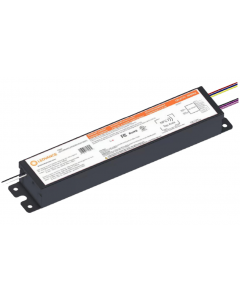 75858 LEDVANCE LEDrv88UNVL2400DIM1AUX12NFC tapTronic Linear 88w Constant Current LED DriverSpecial Price $62.91 Regular Price $78.63
75858 LEDVANCE LEDrv88UNVL2400DIM1AUX12NFC tapTronic Linear 88w Constant Current LED DriverSpecial Price $62.91 Regular Price $78.63 -
 75856 LEDVANCE LEDrv36UNVL1000DIM1AUX12NFC tapTronic Linear 36w Constant Current LED DriverSpecial Price $49.12 Regular Price $61.40
75856 LEDVANCE LEDrv36UNVL1000DIM1AUX12NFC tapTronic Linear 36w Constant Current LED DriverSpecial Price $49.12 Regular Price $61.40 -
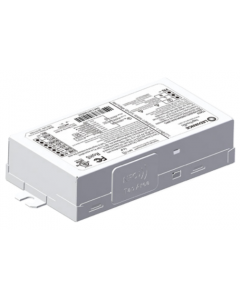 75853 LEDVANCE LEDrv40UNVC1400DIM1JAUX12NFC tapTronic Compact 40w Constant Current LED DriverSpecial Price $64.46 Regular Price $80.58
75853 LEDVANCE LEDrv40UNVC1400DIM1JAUX12NFC tapTronic Compact 40w Constant Current LED DriverSpecial Price $64.46 Regular Price $80.58 -
 75851 LEDVANCE LEDrv25UNVC1250DIM1JAUX12NFC tapTronic Compact 25w Constant Current LED DriverSpecial Price $58.32 Regular Price $72.90
75851 LEDVANCE LEDrv25UNVC1250DIM1JAUX12NFC tapTronic Compact 25w Constant Current LED DriverSpecial Price $58.32 Regular Price $72.90 -
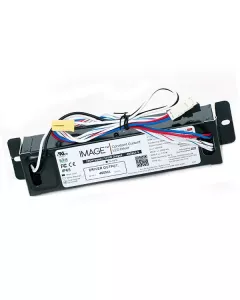 LSI 705711 LED Driver XHB3 450 UESpecial Price $216.25 Regular Price $270.35
LSI 705711 LED Driver XHB3 450 UESpecial Price $216.25 Regular Price $270.35 -
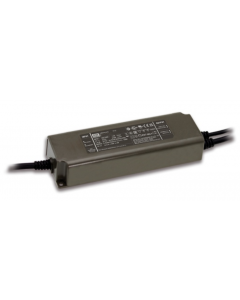 PWM-120-48 Mean Well 120W Constant Voltage Dimmable LED DriverSpecial Price $67.83 Regular Price $84.79
PWM-120-48 Mean Well 120W Constant Voltage Dimmable LED DriverSpecial Price $67.83 Regular Price $84.79 -
 PWM-120-24 Mean Well 120W Constant Voltage Dimmable LED DriverSpecial Price $74.34 Regular Price $92.93
PWM-120-24 Mean Well 120W Constant Voltage Dimmable LED DriverSpecial Price $74.34 Regular Price $92.93 -
 PWM-120-12 Mean Well 120W Constant Voltage Dimmable LED DriverSpecial Price $68.30 Regular Price $85.38
PWM-120-12 Mean Well 120W Constant Voltage Dimmable LED DriverSpecial Price $68.30 Regular Price $85.38 -
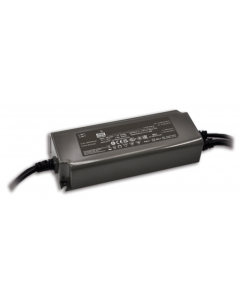 PWM-90-24 Mean Well 90W Constant Voltage Dimmable LED DriverSpecial Price $59.54 Regular Price $74.43
PWM-90-24 Mean Well 90W Constant Voltage Dimmable LED DriverSpecial Price $59.54 Regular Price $74.43 -
 PWM-90-12 Mean Well 90W Constant Voltage Dimmable LED DriverSpecial Price $65.74 Regular Price $82.18
PWM-90-12 Mean Well 90W Constant Voltage Dimmable LED DriverSpecial Price $65.74 Regular Price $82.18 -
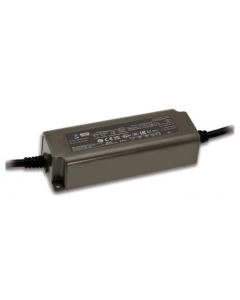 PWM-60-48 Mean Well 60W Constant Voltage Dimmable LED DriverSpecial Price $46.48 Regular Price $58.10
PWM-60-48 Mean Well 60W Constant Voltage Dimmable LED DriverSpecial Price $46.48 Regular Price $58.10 -
 PWM-60-24 Mean Well 60W Constant Voltage Dimmable LED DriverSpecial Price $43.16 Regular Price $53.95
PWM-60-24 Mean Well 60W Constant Voltage Dimmable LED DriverSpecial Price $43.16 Regular Price $53.95 -
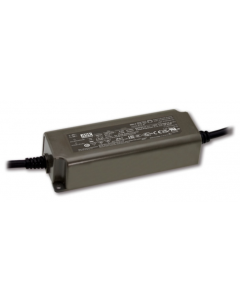 PWM-40-48 Mean Well 40W Constant Voltage Dimmable LED DriverSpecial Price $42.26 Regular Price $52.82
PWM-40-48 Mean Well 40W Constant Voltage Dimmable LED DriverSpecial Price $42.26 Regular Price $52.82 -
 PWM-40-36 Mean Well 40W Constant Voltage Dimmable LED DriverSpecial Price $42.26 Regular Price $52.82
PWM-40-36 Mean Well 40W Constant Voltage Dimmable LED DriverSpecial Price $42.26 Regular Price $52.82 -
 PWM-40-24 Mean Well 40W Constant Voltage Dimmable LED DriverSpecial Price $42.26 Regular Price $52.82
PWM-40-24 Mean Well 40W Constant Voltage Dimmable LED DriverSpecial Price $42.26 Regular Price $52.82 -
 PWM-40-12 Mean Well 40W Constant Voltage Dimmable LED DriverSpecial Price $43.17 Regular Price $53.96
PWM-40-12 Mean Well 40W Constant Voltage Dimmable LED DriverSpecial Price $43.17 Regular Price $53.96 -
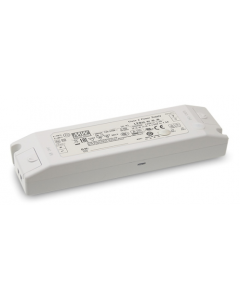 PLC-30-48 Mean Well 30W Constant Current Non-Dimmable LED DriverSpecial Price $44.25 Regular Price $55.31
PLC-30-48 Mean Well 30W Constant Current Non-Dimmable LED DriverSpecial Price $44.25 Regular Price $55.31 -
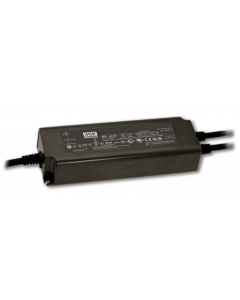 NPF-120D-54 Mean Well 124W Constant Current Dimmable LED DriverSpecial Price $67.83 Regular Price $84.79
NPF-120D-54 Mean Well 124W Constant Current Dimmable LED DriverSpecial Price $67.83 Regular Price $84.79 -
 NPF-120D-48 Mean Well 120W Constant Current Dimmable LED DriverSpecial Price $67.83 Regular Price $84.79
NPF-120D-48 Mean Well 120W Constant Current Dimmable LED DriverSpecial Price $67.83 Regular Price $84.79 -
 NPF-120D-30 Mean Well 120W Constant Current Dimmable LED DriverSpecial Price $66.00 Regular Price $82.50
NPF-120D-30 Mean Well 120W Constant Current Dimmable LED DriverSpecial Price $66.00 Regular Price $82.50 -
 NPF-120D-24 Mean Well 120W Constant Current Dimmable LED DriverSpecial Price $67.83 Regular Price $84.79
NPF-120D-24 Mean Well 120W Constant Current Dimmable LED DriverSpecial Price $67.83 Regular Price $84.79 -
 NPF-120D-20 Mean Well 120W Constant Current Dimmable LED DriverSpecial Price $69.39 Regular Price $86.73
NPF-120D-20 Mean Well 120W Constant Current Dimmable LED DriverSpecial Price $69.39 Regular Price $86.73 -
 NPF-120D-15 Mean Well 120W Constant Current Dimmable LED DriverSpecial Price $71.08 Regular Price $88.85
NPF-120D-15 Mean Well 120W Constant Current Dimmable LED DriverSpecial Price $71.08 Regular Price $88.85 -
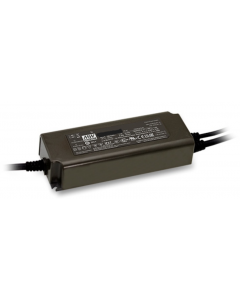 NPF-90D-54 Mean Well 90W Constant Current Dimmable LED DriverSpecial Price $59.54 Regular Price $74.43
NPF-90D-54 Mean Well 90W Constant Current Dimmable LED DriverSpecial Price $59.54 Regular Price $74.43 -
 NPF-90D-36 Mean Well 90W Constant Current Dimmable LED DriverSpecial Price $59.54 Regular Price $74.43
NPF-90D-36 Mean Well 90W Constant Current Dimmable LED DriverSpecial Price $59.54 Regular Price $74.43 -
 NPF-90D-30 Mean Well 90W Constant Current Dimmable LED DriverSpecial Price $59.54 Regular Price $74.43
NPF-90D-30 Mean Well 90W Constant Current Dimmable LED DriverSpecial Price $59.54 Regular Price $74.43 -
 NPF-90D-24 Mean Well 90W Constant Current Dimmable LED DriverSpecial Price $64.12 Regular Price $80.15
NPF-90D-24 Mean Well 90W Constant Current Dimmable LED DriverSpecial Price $64.12 Regular Price $80.15 -
 NPF-90D-12 Mean Well 90W Constant Current Dimmable LED DriverSpecial Price $64.12 Regular Price $80.15
NPF-90D-12 Mean Well 90W Constant Current Dimmable LED DriverSpecial Price $64.12 Regular Price $80.15 -
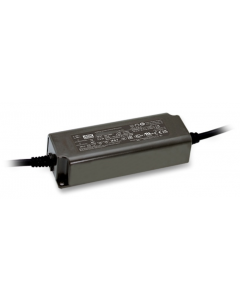 NPF-60D-54 Mean Well 60W Constant Current Dimmable LED DriverSpecial Price $43.16 Regular Price $53.95
NPF-60D-54 Mean Well 60W Constant Current Dimmable LED DriverSpecial Price $43.16 Regular Price $53.95 -
 NPF-60D-48 Mean Well 60W Constant Current Dimmable LED DriverSpecial Price $46.48 Regular Price $58.10
NPF-60D-48 Mean Well 60W Constant Current Dimmable LED DriverSpecial Price $46.48 Regular Price $58.10 -
 NPF-60D-42 Mean Well 60W Constant Current Dimmable LED DriverSpecial Price $43.16 Regular Price $53.95
NPF-60D-42 Mean Well 60W Constant Current Dimmable LED DriverSpecial Price $43.16 Regular Price $53.95 -
 NPF-60D-36 Mean Well 60W Constant Current Dimmable LED DriverSpecial Price $43.16 Regular Price $53.95
NPF-60D-36 Mean Well 60W Constant Current Dimmable LED DriverSpecial Price $43.16 Regular Price $53.95 -
 NPF-60D-30 Mean Well 60W Constant Current Dimmable LED DriverSpecial Price $48.07 Regular Price $60.09
NPF-60D-30 Mean Well 60W Constant Current Dimmable LED DriverSpecial Price $48.07 Regular Price $60.09 -
 NPF-60D-24 Mean Well 60W Constant Current Dimmable LED DriverSpecial Price $43.16 Regular Price $53.95
NPF-60D-24 Mean Well 60W Constant Current Dimmable LED DriverSpecial Price $43.16 Regular Price $53.95 -
 NPF-60D-20 Mean Well 60W Constant Current Dimmable LED DriverSpecial Price $47.50 Regular Price $59.38
NPF-60D-20 Mean Well 60W Constant Current Dimmable LED DriverSpecial Price $47.50 Regular Price $59.38 -
 NPF-60D-15 Mean Well 60W Constant Current Dimmable LED DriverSpecial Price $46.48 Regular Price $58.10
NPF-60D-15 Mean Well 60W Constant Current Dimmable LED DriverSpecial Price $46.48 Regular Price $58.10 -
 NPF-60D-12 Mean Well 60W Constant Current Dimmable LED DriverSpecial Price $48.07 Regular Price $60.09
NPF-60D-12 Mean Well 60W Constant Current Dimmable LED DriverSpecial Price $48.07 Regular Price $60.09 -
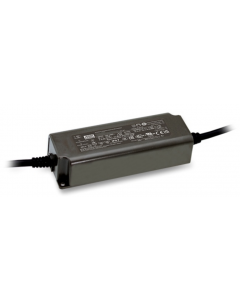 NPF-40D-54 Mean Well 41W Constant Current Dimmable LED DriverSpecial Price $43.82 Regular Price $54.77
NPF-40D-54 Mean Well 41W Constant Current Dimmable LED DriverSpecial Price $43.82 Regular Price $54.77 -
 NPF-40D-48 Mean Well 40W Constant Current Dimmable LED DriverSpecial Price $43.82 Regular Price $54.77
NPF-40D-48 Mean Well 40W Constant Current Dimmable LED DriverSpecial Price $43.82 Regular Price $54.77 -
 NPF-40D-42 Mean Well 40W Constant Current Dimmable LED DriverSpecial Price $43.82 Regular Price $54.77
NPF-40D-42 Mean Well 40W Constant Current Dimmable LED DriverSpecial Price $43.82 Regular Price $54.77 -
 NPF-40D-36 Mean Well 40W Constant Current Dimmable LED DriverSpecial Price $40.87 Regular Price $51.09
NPF-40D-36 Mean Well 40W Constant Current Dimmable LED DriverSpecial Price $40.87 Regular Price $51.09 -
 NPF-40D-24 Mean Well 40W Constant Current Dimmable LED DriverSpecial Price $43.82 Regular Price $54.77
NPF-40D-24 Mean Well 40W Constant Current Dimmable LED DriverSpecial Price $43.82 Regular Price $54.77 -
 NPF-40D-20 Mean Well 40W Constant Current Dimmable LED DriverSpecial Price $40.69 Regular Price $50.86
NPF-40D-20 Mean Well 40W Constant Current Dimmable LED DriverSpecial Price $40.69 Regular Price $50.86 -
 NPF-40D-15 Mean Well 40W Constant Current Dimmable LED DriverSpecial Price $40.69 Regular Price $50.86
NPF-40D-15 Mean Well 40W Constant Current Dimmable LED DriverSpecial Price $40.69 Regular Price $50.86 -
 NPF-40D-12 Mean Well 40W Constant Current Dimmable LED DriverSpecial Price $43.82 Regular Price $54.77
NPF-40D-12 Mean Well 40W Constant Current Dimmable LED DriverSpecial Price $43.82 Regular Price $54.77 -
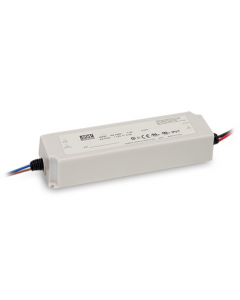 LPV-100-48 Mean Well 100W Constant Voltage Non-Dimmable LED DriverSpecial Price $34.40 Regular Price $43.00
LPV-100-48 Mean Well 100W Constant Voltage Non-Dimmable LED DriverSpecial Price $34.40 Regular Price $43.00 -
 LPV-100-36 Mean Well 100W Constant Voltage Non-Dimmable LED DriverSpecial Price $36.40 Regular Price $45.50
LPV-100-36 Mean Well 100W Constant Voltage Non-Dimmable LED DriverSpecial Price $36.40 Regular Price $45.50 -
 LPV-100-24 Mean Well 100W Constant Voltage Non-Dimmable LED DriverSpecial Price $38.00 Regular Price $47.50
LPV-100-24 Mean Well 100W Constant Voltage Non-Dimmable LED DriverSpecial Price $38.00 Regular Price $47.50 -
 LPV-100-15 Mean Well 100W Constant Voltage Non-Dimmable LED DriverSpecial Price $42.47 Regular Price $53.08
LPV-100-15 Mean Well 100W Constant Voltage Non-Dimmable LED DriverSpecial Price $42.47 Regular Price $53.08 -
 LPV-100-12 Mean Well 102W Constant Voltage Non-Dimmable LED DriverSpecial Price $38.13 Regular Price $47.66
LPV-100-12 Mean Well 102W Constant Voltage Non-Dimmable LED DriverSpecial Price $38.13 Regular Price $47.66

